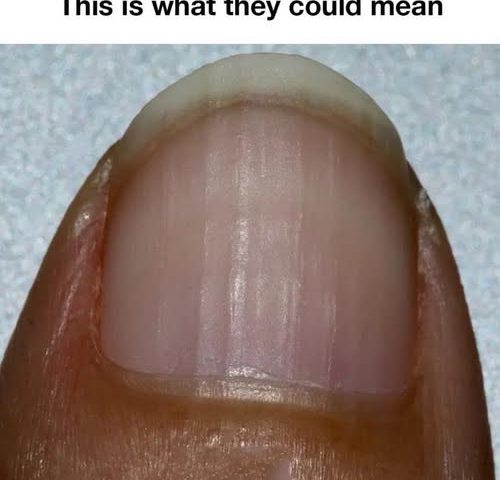Understanding what these ridges mean is important to maintain both nail health and overall well-being. Some ridges are harmless and simply a part of the aging process, but others can be indicative of nutritional deficiencies or more serious health conditions. In this article, we will explore the various causes of nail ridges, what they might signify, and when you should consider seeking medical advice.
1. Understanding the Structure of Fingernails
Fingernails are made of keratin, a protein also found in our hair and skin. The visible, hard part of the nail—called the nail plate—is composed of layers of dead keratinized cells. Just beneath it lies the nail bed, which is full of blood vessels and supplies essential nutrients to the nail.
Nail growth starts in the nail matrix, located under the cuticle. On average, fingernails grow about 3 millimeters per month, though this rate can vary depending on factors like age, nutrition, and overall health. Nails serve to protect the sensitive ends of our fingers and help us grip and handle objects more effectively.
2. Common Causes of Nail Ridges
Nail ridges can be caused by various factors, ranging from benign to more serious conditions. One of the most common causes of nail ridges is aging. As we age, the production of natural oils and moisture in the nail bed decreases, leading to the formation of ridges.
Other common causes include nutritional deficiencies, particularly a lack of essential vitamins and minerals such as zinc, iron, and vitamin B12. In addition, trauma to the nail, such as from biting or picking, can lead to ridges. Certain medical conditions, such as eczema or psoriasis, can also affect nail texture.
3. Vertical Ridges: What They Indicate
Vertical ridges, which run from the cuticle to the tip of the nail, are often considered a normal part of aging. These ridges are usually harmless and are caused by changes in cell turnover within the nail matrix.
Yet, if vertical ridges are accompanied by other symptoms such as discoloration or changes in nail thickness, it may be worth consulting a healthcare professional. In some cases, vertical ridges can be a sign of nutritional deficiencies or underlying health issues that require attention.
4. Horizontal Ridges: A Sign of Health Issues?
Horizontal ridges, also known as Beau’s lines, can be more concerning than vertical ridges. These ridges can indicate a temporary interruption in nail growth due to illness, injury, or stress. Conditions such as severe infections, high fever, or even surgery can cause Beau’s lines.
In some cases, horizontal ridges may be a sign of more serious health issues, such as uncontrolled diabetes or vascular disease. If you notice horizontal ridges on your nails, especially if they are deep or accompanied by other symptoms, it is advisable to seek medical evaluation.
5. Age-Related Changes in Nail Texture
When we age, our nails undergo various changes, including the development of ridges. This is largely due to a decrease in the production of natural oils and moisture, which can lead to dryness and changes in nail texture.
Additionally, the rate of nail growth tends to slow down with age, which can contribute to the appearance of ridges. While these changes are generally harmless, maintaining proper nail care and hydration can help minimize their appearance.
6. Nutritional Deficiencies and Their Impact on Nails
Nutritional deficiencies can have a significant impact on nail health. A lack of essential nutrients such as iron, zinc, and biotin can lead to brittle nails and the formation of ridges.
Iron deficiency, in particular, is known to cause spoon-shaped nails (koilonychia) and can also contribute to the development of ridges. Ensuring a balanced diet rich in vitamins and minerals is crucial for maintaining healthy nails.
7. The Role of Genetics in Nail Appearance
Genetics play a significant role in determining the appearance and health of our nails. Some people may be genetically predisposed to developing ridges or other nail abnormalities.
While genetic factors cannot be changed, understanding your genetic predisposition can help you take proactive steps to care for your nails and address any potential issues early on.
8. Viral Hacks for Smoother Nails
In recent years, social media platforms have popularized various hacks for achieving smoother nails. These include using nail buffers to gently smooth out ridges and applying moisturizing oils to hydrate the nail bed.
While some of these hacks can be effective, it’s important to approach them with caution and avoid over-buffing, which can thin the nail plate and lead to further damage.
9. When to Seek Medical Advice
While many nail ridges are harmless, there are certain situations where medical advice should be sought. If you notice sudden changes in your nails, such as the development of deep ridges, discoloration, or pain, it is important to consult a healthcare professional.
Additionally, if nail ridges are accompanied by other symptoms such as fatigue, weight loss, or changes in skin texture, it may indicate an underlying health condition that requires further investigation.
10. Preventive Measures for Healthy Nails
Maintaining healthy nails involves a combination of proper nutrition, hydration, and nail care. Eating a balanced diet rich in vitamins and minerals can help prevent nutritional deficiencies that contribute to nail ridges.
Regularly moisturizing your nails and cuticles can also help maintain nail health and prevent dryness. Avoiding harsh chemicals and minimizing trauma to the nails can further reduce the risk of developing ridges.
11. Debunking Myths About Nail Ridges
There are many myths surrounding nail ridges, including the belief that they are always a sign of serious health issues. In reality, most nail ridges are benign and related to aging or minor nutritional deficiencies.
Another common myth is that nail ridges can be completely eliminated through buffing or topical treatments. While these methods can improve the appearance of ridges, they do not address the underlying causes. Understanding the true nature of nail ridges can help dispel these myths and promote better nail care practices.
